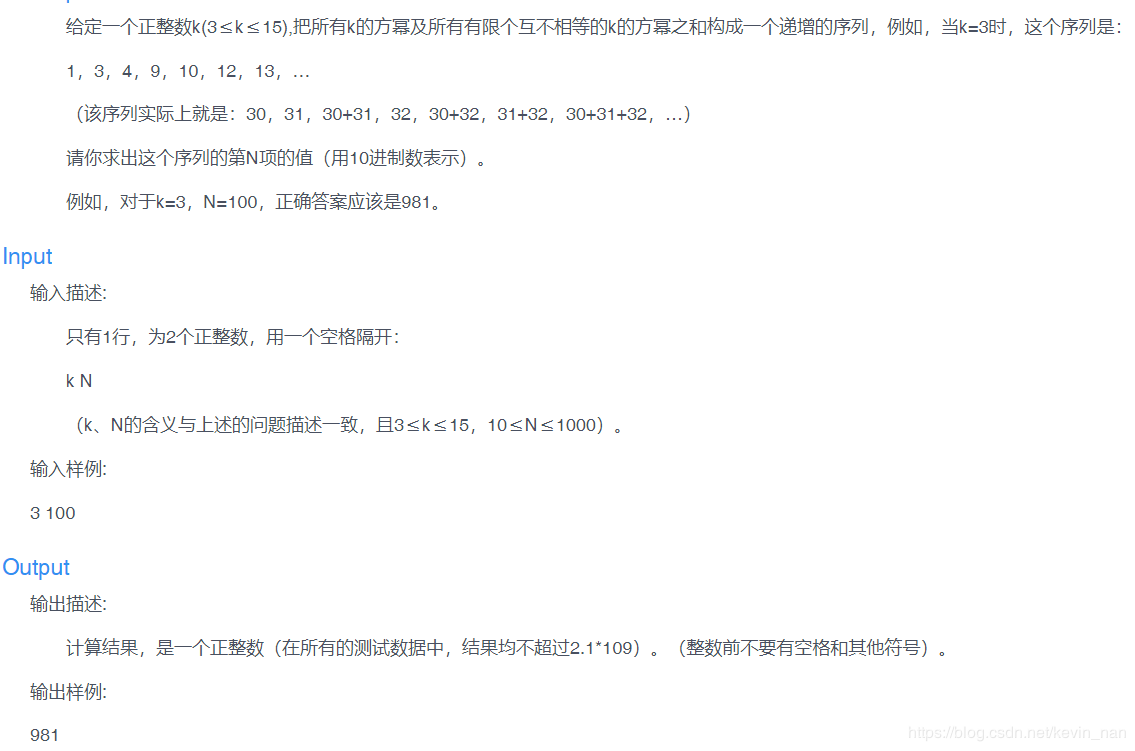数列

跟杨辉三角模型的思路差不多
//3^0
//3^1 3^0+3^1
//3^2 3^0+3^2 3^1+3^2 3^0+3^1+3^2
//3^3 3^0+3^3 3^1+3^3 3^2+3^3 3^0+3^1+3^2+3^3
import java.util.Scanner;
public class Main {
public static int number(int k, int N) {
int arr[] = new int [N];
int i,len;
int now;
len=0;
now=1;
while(len<N){
int tmp=len;
arr[len++]=now;
for(i=0;i<tmp&&len<N;i++)
arr[len++]=now+arr[i];
now*=k;
}
return arr[N-1];
}
public static void main(String[] args) {
Scanner sc = new Scanner(System.in);
int k = sc.nextInt();
int N = sc.nextInt();
System.out.println(number(k, N));
}
}
转载c++的解法
/*
分析:
3^0
3^1 3^0+3^1
3^2 3^0+3^2 3^1+3^2 3^0+3^1+3^2
规律当前n加进去一个,然后要再加上前面所有的个数
如果到了某个n,加前面所有的大于N个,就扫下剩下的第几个就行
时间复杂度O(n)
f(n)=1+2*f(n-1) fn表示有几个数目前
f(0)=1;
f(1)=3;
f(2)=7;
求得大于等于N时的n,然后N-f(n-1)剩下的从左边开始数
*/
#include <iostream>
#include <cstdio>
using namespace std;
const int N=1000+5;
int a[N]; //好奇怪改longlong最后一个测试数据会过不去
int main()
{
int n,i,len;
int now,k; //k^i
while(cin>>k>>n){
len=0;
now=1;
while(len<n){
int tmp=len;
a[len++]=now;
for(i=0;i<tmp&&len<n;i++)
a[len++]=now+a[i];
now*=k;
}
cout<<a[n-1]<<endl;
}
return 0;
}


